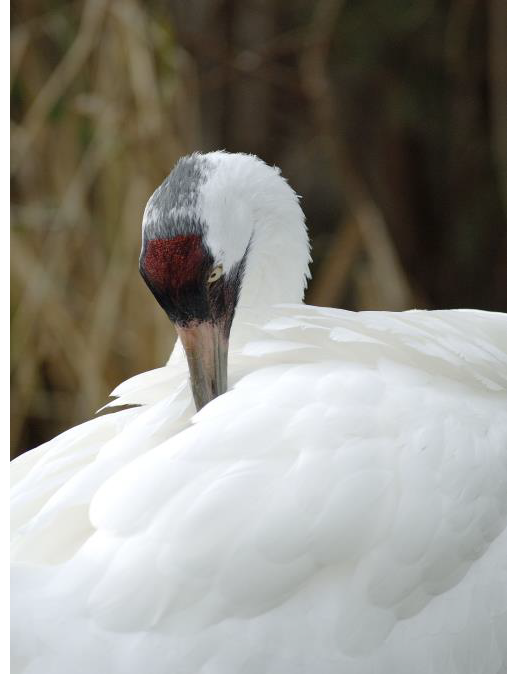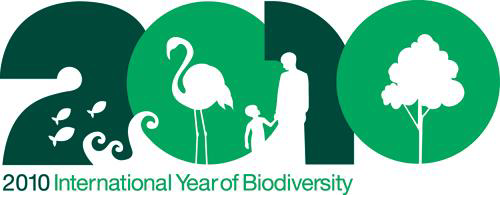Printable version (PDF - 587 kB)
Risk of Extinction Increases for Atlantic Cod
Numbers continue to decline for most Atlantic Cod populations. So concluded COSEWIC (Committee on the Status of Endangered Wildlife in Canada) which recently assessed the risk of extinction for 51 Canadian wildlife species when it met in Victoria, British Columbia from 25-30 April 2010.
Atlantic Cod has been an economic and dietary mainstay for maritime communities since the late 15th century. Decades of unsustainable harvesting have depleted Canada’s cod populations, three of which have declined by 90% or more since the 1960s. Continuing directed fisheries and bycatch, combined with major changes in marine food webs in some areas, have significantly reduced the ability of cod populations south of Baffin Island to rebuild. Additionally, these four populations have diminished to the extent that they are predicted to experience serious or irreparable harm; as such, all four were assessed as Endangered.

Is Canada’s Tallest Bird recovering from the Brink of Extinction?
Standing the same height as an average person, the Whooping Crane has increased in numbers since it hit an historic low of only 14 birds in 1938. Originally decimated by unregulated hunting and loss of habitat throughout its North American range, the bird still faces multiple threats including ongoing degradation of over-wintering habitat along the coast of Texas. All of the nesting habitat for the only wild population is protected in Canada’s Wood Buffalo National Park which is also a UNESCO World Heritage Site. Despite heroic international efforts to recover this species, the Whooping Crane is still considered highly vulnerable to extinction given that the population currently numbers fewer than 250 individuals. The species was re-assessed as Endangered.
Imminent Extinction for a Bumble Bee?
The Rusty-patched Bumble Bee was once an important pollinator, especially for early and late flowering native plants in southern Ontario. Despite extensive surveys over the past decade, only 3 individuals of this distinctive bee have been found, all at one site. Rapid declines of the Rusty-patched Bumble Bee coincide with similar trends in bees globally; the reason remains a mystery but possible factors include pesticides, disease and parasites, and loss of habitat. The committee assessed this bee as Endangered, reflecting the increasing concern for ecologically and economically important pollinators worldwide.
Climate Change Takes its Toll in Western Canada
Climate change is increasing the risk of extinction for many wildlife species. For instance, high-elevation species like the Whitebark Pine of the Coast and Rocky Mountain ranges are predicted to run out of habitat as temperatures rise. The principal threat to this tree is an infectious fungus called Blister Rust, but the cumulative impacts of climate change, Mountain Pine Beetle infestations and fire suppression have all contributed to an ongoing population reduction of 70%, resulting in an assessment of Endangered. Climate change is also a contributing factor in the loss of habitat for the charismatic Flammulated Owl, a small bird dependent on the mature coniferous forests of British Columbia’s interior regions. The Mountain Pine Beetle, no longer kept in check by cold winters, is reducing habitat quality for this bird. This, in combination with ongoing logging of mature trees and the potential for an increase in catastrophic forest fires, led to a designation of Special Concern for the owl.
Freshwater Mussels at Risk in Ontario Rivers
Southern Ontario is a hotbed for freshwater mussel diversity. This region also has one of the greatest concentrations of at-risk aquatic wildlife species in Canada owing in part to spreading urban and industrial development, agriculture and invasive species. The Wavy-rayed Lampmussel, once a common mollusc in streams of the Great Lakes basin, rapidly declined with the expansion of large-scale agriculture and the spread of invasive Zebra Mussels. Although recent surveys suggest greater numbers of Wavy-rayed Lampmussel than previously estimated, resulting in a change of status from Endangered to Special Concern, there are still 11 species of Endangered mussels in Ontario.
Evolution on display in British Columbia’s Freshwaters
British Columbia is home to endemic wildlife species found nowhere else on the globe. A unique geological and glacial history has resulted in many opportunities for rapid evolution and speciation in the province. Nowhere is this more evident than on BC’s Texada Island where two unique forms of Threespine Stickleback occur in two watersheds. In both cases, these small fishes have evolved into two distinct species pairs in less than 10,000 years. Invasive species and habitat alterations represent very real extinction risks, and both species pairs of stickleback were re-assessed as Endangered.
Next meeting
COSEWIC’s next scheduled wildlife species assessment meeting will be held in Ottawa, ON, November 22-26, 2010.
About COSEWIC
COSEWIC assesses the status of wild species, subspecies, varieties, or other important units of biological diversity, considered to be at risk in Canada. To do so, COSEWIC uses scientific, Aboriginal traditional and community knowledge provided by experts from governments, academia and other organizations. Summaries of assessments are currently available to the public on the COSEWIC website (and will be submitted to the Federal Minister of the Environment in fall 2010 for listing consideration under the Species at Risk Act (SARA). At this time, the status reports and status appraisal summaries will be publicly available on the Species at Risk Public Registry.
There are now 602 wildlife species in various COSEWIC risk categories, including 262 Endangered, 151 Threatened, 166 Special Concern, and 23 Extirpated (i.e. no longer found in the wild in Canada). In addition to these wildlife species that are in COSEWIC risk categories, there are 13 wildlife species that are Extinct.
COSEWIC comprises members from each provincial and territorial government wildlife agency, four federal entities (Canadian Wildlife Service, Parks Canada Agency, Fisheries and Oceans Canada, and the Canadian Museum of Nature), three Non-government Science Members, and the Co-chairs of the Species Specialist and the Aboriginal Traditional Knowledge Subcommittees.
Definition of COSEWIC terms and status categories:
Wildlife Species: A species, subspecies, variety, or geographically or genetically distinct population of animal, plant or other organism, other than a bacterium or virus, that is wild by nature and is either native to Canada or has extended its range into Canada without human intervention and has been present in Canada for at least 50 years.
Extinct (X): A wildlife species that no longer exists.
Extirpated (XT)1: A wildlife species that no longer exists in the wild in Canada, but exists elsewhere.
Endangered (E)1: A wildlife species facing imminent extirpation or extinction.
Threatened (T)1: A wildlife species that is likely to become Endangered if nothing is done to reverse the factors leading to its extirpation or extinction.
Special Concern (SC)1: A wildlife species that may become Threatened or Endangered because of a combination of biological characteristics and identified threats.
Not at Risk (NAR): A wildlife species that has been evaluated and found to be not at risk of extinction given the current circumstances.
Data Deficient (DD): A category that applies when the available information is insufficient (a) to resolve a wildlife species’ eligibility for assessment or (b) to permit an assessment of the wildlife species’ risk of extinction.
Species at Risk: A wildlife species that has been assessed as Extirpated, Endangered, Threatened or Special Concern.
| Dr. Jeffrey Hutchings Outgoing Chair, COSEWIC Department of Biology Dalhousie University Telephone (1): (902) 494-2687 Telephone (2): (902) 494-3515 |
For general inquiries: COSEWIC Secretariat Canadian Wildlife Service Environment and Climate Change Canada 351 St. Joseph Blvd, 16th floor Gatineau QC K1A 0H3 Telephone: 819-938-4125 Fax: 819-938-3984 Cosewic |
| For inquiries on marine mammals: Dr. Randall Reeves Okapi Wildlife Associates Telephone: (450) 458-6685 |
For inquiries on terrestrial mammals: Dr. Justina C. Ray Executive Director Wildlife Conservation Society Canada Telephone: (416) 850-9038 x 22 |
| For inquiries on birds: Jon McCracken Bird Studies Canada Telephone: 519-586-3531 (ext. 115) |
For inquiries on amphibians and reptiles: Dr. Ronald J. Brooks College of Biological Science University of Guelph Telephone: (519) 836-8817 |
| For inquiries on freshwater fishes: Dr. Eric B. (Rick) Taylor Department of Zoology University of British Columbia Telephone: (604) 822-9152 |
For inquiries on marine fishes: Alan F. Sinclair |
| For inquiries on arthropods (insects and related taxa): Dr. Laurence Packer Department of Biology York University Telephone: (416) 736-2100 ext. 66524 |
For inquiries on molluscs: Dr. Dwayne Lepitzki Telephone: (403) 762-0864 |
| For inquiries on plants: Dr. Erich Haber Telephone: (613) 435-0216 |
For inquiries on lichens: Dr. René Belland Devonian Botanic Garden University of Alberta Telephone: (780) 987-3054 ext. 2240 |
In 2010, the United Nations International Year of Biodiversity, people around the world will step up efforts to slow down the widespread rapid rate of biodiversity loss. As well, throughout the year, communities will celebrate the amazing diversity of life on the planet.


